Chris Graham sings the praises of the Andalusian; a really useful breed that, despite its many plus points, remains stubbornly stuck in the wings.

One of the biggest mysteries associated with the Andalusian is why it continues to be so rare! For a breed that has so much going for it, it’s strange that it remains in the hands of so few keepers today.
So what’s the problem? Does the name simply sound too foreign? Are people put off by the prospect of a hard-to-handle, Mediterranean temperament? Or perhaps it’s simply that the breed’s presence has fallen to such a degree that, nowadays, it’s hard to learn about, and even harder to buy.
Whatever the reason, the Andalusian’s current popularity plight is a crying shame, and I believe that would-be keepers are certainly missing a great opportunity as a result. This bird really can provide a genuinely useful, back-garden proposition; a beautiful and elegant appearance combines with all the utility performance you could reasonably wish for from a pure breed, to produce an attractively different yet highly desirable chicken.
Yet, despite having been around for well over 100 years in more or less its present form – and being available in bantam form, too – these pretty birds are regrettably forced to languish on the periphery of the poultry Fancy, without a dedicated club to support or promote their overall wellbeing
Spanish roots?
Like so many of our ‘traditional’ pure breeds, the waters of the Andalusian’s genetic background are decidedly muddied! Popular belief has it that the breed was originally developed by sherry barons in southwestern Spain, in a region around Cadiz, called Andalusia. Certainly, Spanish fowl from that area were used as a starting point, but most of the actual evidence suggests that the significant breeding and development work was actually carried out in England.
هذه القصة مأخوذة من طبعة Spring 2017 من Practical Poultry.
ابدأ النسخة التجريبية المجانية من Magzter GOLD لمدة 7 أيام للوصول إلى آلاف القصص المتميزة المنسقة وأكثر من 9,000 مجلة وصحيفة.
بالفعل مشترك ? تسجيل الدخول
هذه القصة مأخوذة من طبعة Spring 2017 من Practical Poultry.
ابدأ النسخة التجريبية المجانية من Magzter GOLD لمدة 7 أيام للوصول إلى آلاف القصص المتميزة المنسقة وأكثر من 9,000 مجلة وصحيفة.
بالفعل مشترك? تسجيل الدخول
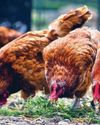
Growing food for Chickens
Mary Larham explores some crops to grow on your holding…
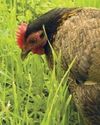
Poultry in the garden – the truth!
Jo-Jane Buxton shares her experiences

The British Waterfowl Association
Which came first, the goose or the egg?

WHY FIT A FAN IN AN INCUBATOR?
Brinsea Products, the Incubation Specialists explain the difference between still air and forced draught
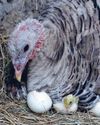
Incubating turkey eggs
Janice Houghton-Wallace looks at broody turkeys and artificial incubation

Chicken nesting box herbs
Diana Clauss owns The Blue Feather Farm, in St Cloud, Florida, home to chickens, ducks, goats, and Anatolian Shepherd dogs.
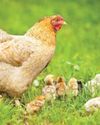
Incubate in January?
Jessica Wombwell says plan the breeding
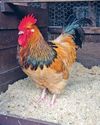
Andy's DIARY
Andy emphases the importance of keeping out damp and wet but allowing ventilation even in cold weather

Feeding for Breeding
It may be winter, but as Joanna Palmer, nutritionist for Smallholder Range explains, now’s the time to get your flock in tiptop shape and plan ahead for a successful breeding season next spring.

A chick named Cuckoo raised by a duck!
Chris Hammacott and her husband live on a small croft in the Outer Hebrides, they keep a ‘no kill’ flock or rare and rescue sheep which they use to spin and weave rugs. They also share the 8 acres with hens, ducks, cats and 9 rescue pugs.